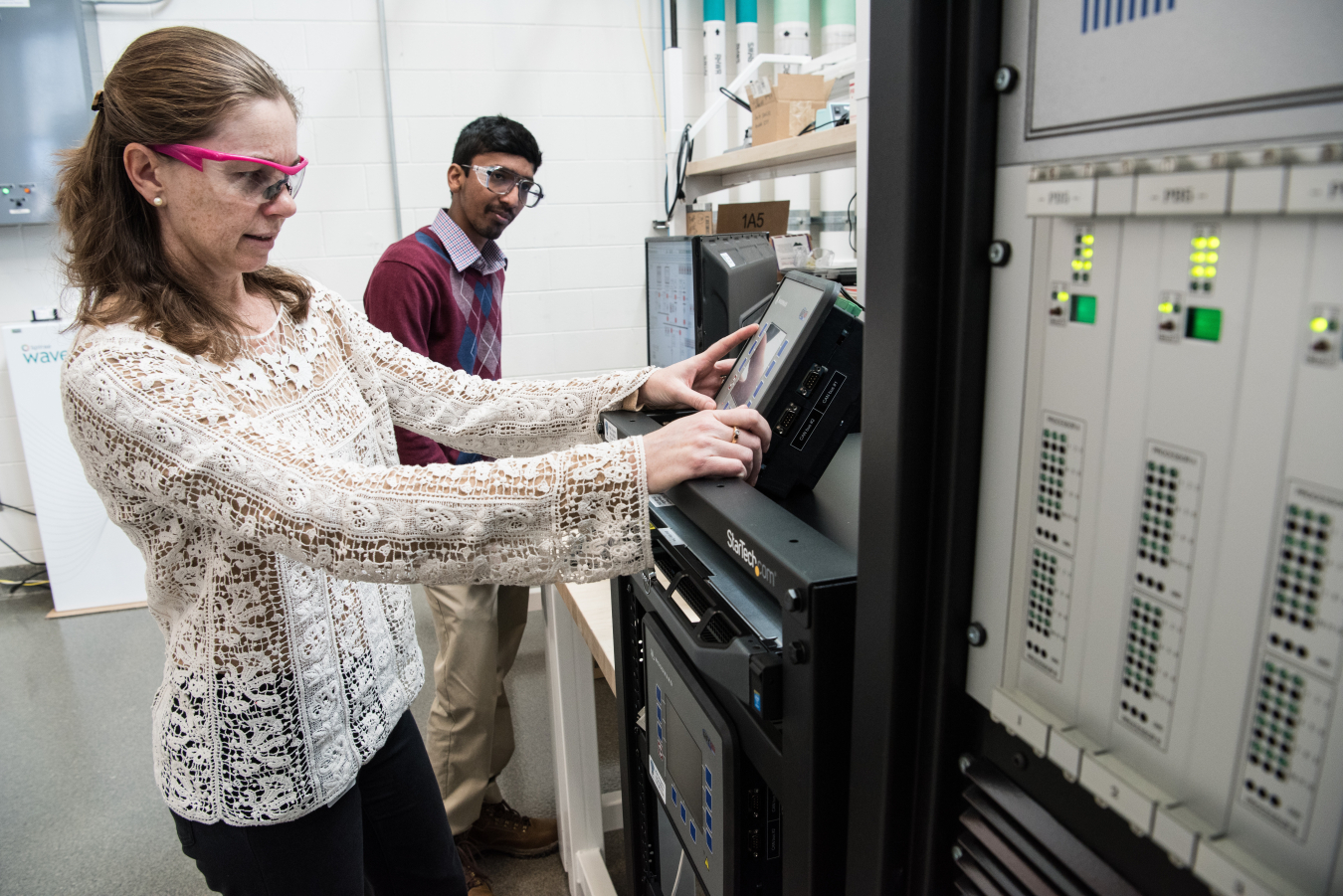Learn why Dr. Annabelle Pratt loves her job as an engineer in the Power Systems Engineering Center of the National Renewable Energy Laboratory.
December 12, 2019
Annabelle Pratt received a bachelor’s and master’s degree in electrical and electronic engineering from the University of Stellenbosch, South Africa, and her Ph.D. degree in electrical engineering from Oregon State University. She is a principal engineer in the Power Systems Engineering Center of the National Renewable Energy Laboratory (NREL) where she has been working on the development and evaluation of energy management systems at the building, microgrid, and distribution system levels since 2014. She applies cosimulation and power and controller hardware-in-the-loop techniques to system performance evaluation. Prior to joining NREL, she was a senior power research engineer with Intel Labs, and previously she was with Advanced Energy Industries where she developed power supplies for the semiconductor manufacturing and architectural glass-coating industries.
What inspired you to work in STEM?
I always enjoyed math and science in school and my older brothers, who are also both engineers, encouraged me to consider engineering as a career choice. I enjoyed both the theoretical aspects of my training and the hands-on laboratory experience—especially those addicting moments when something you designed and built finally works. I love knowing that something I worked on is operating somewhere out there in the world, contributing to society.
What excites you about your work at the Energy Department?
Our electrical infrastructure is one of the essential elements of our modern life, and I find it very meaningful to know that I am contributing to the continued reliable and affordable operation of our electric power system as we integrate more and more variable and renewable distributed energy resources into the system. I also value the people I work with who are dedicated and ambitious in imagining, designing, and evaluating new technologies and controls to improve the operation of our power system.
How can our country engage more women, girls, and other underrepresented groups in STEM?
It is important to instill confidence in, and provide encouragement to, girls and other underrepresented groups in STEM because it can be daunting to engage in activities where you are in the minority and you don’t have many role models who look like you. In the same vein, we need to provide as much exposure as possible to women who work in STEM, both in real life, such as through workshops offered by women in STEM, and in mainstream media. We also need to continue striving and advocating for equal opportunities for women and other underrepresented groups in STEM education and activities outside the classroom.
Do you have tips you'd recommend for someone looking to enter your field of work?
There are so many different aspects to working in the renewable energy field, from biofuels to the physics of photovoltaic cells to power systems, so first find the area that really excites you—this may involve some trial and error as not all of us know at the outset exactly what we want to spend our working hours on—and then invest the required time and effort in acquiring the qualifications to work in that area. Internships are a great way to experience different environments and help you decide what might be the best fit for you.
When you have free time, what are your hobbies?
Hiking, cross-country skiing, traveling, and reading. I especially enjoy sharing these activities with my kids. Now some of my free time is spent joining them in their hobbies!
Learn more about our programs & resources for women and girls in STEM at /women

